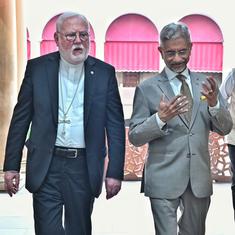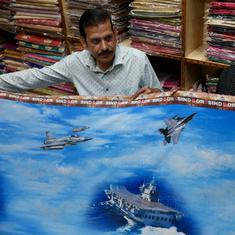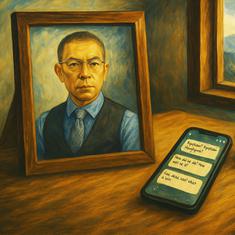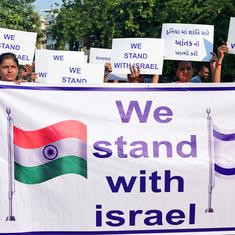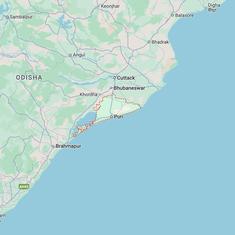Over the decades, the Indian government has attempted to get households to move from using traditional cooking fuel to much cleaner liquified petroleum gas. After all, cow dung, wood and pellets present serious health challenges as they release toxic fumes and pollutants.
Between 2011 and 2021, the government introduced two schemes to improve the adoption of liquified petroleum gas. In a paper, currently under review and whose preprint is available here, we test the efficacy of these policies.
We focus on rural India as the households there have been the prime recipients of these policies and it is also where the challenges to LPG adoption are most dire.
Overall, we find that even in 2021, rural Indian households were still transitioning to modern cooking fuel, thereby exposing the vulnerability of their fuel choice.
Our analysis also suggests that, generally, both the upfront cost as well as the cost of using LPG, even after the subsidies, were high enough to pose a significant barrier towards the adoption of the fuel in many households.
The Covid-19 pandemic, marked by lockdowns and income distress, evaporated much of the headway made over the past decade to improve energy access in rural households, especially in those that belong to the lowest household expenditure-based quintiles.
The Pradhan Mantri Ujjwala Yojana introduced in 2016 aimed to reduce the burden of buying a new LPG connection by subsidising its entire initial cost.
The scheme is for women above the age of 18 who fulfill any of 10 criteria, such as belonging to the Scheduled Castes or Scheduled Tribes category, or a being beneficiary of subsidised grains.
The Pratyaksh Hanstantrit Labh-Direct Benefit Transfer of LPG, or PAHAL-DBTL, on the other hand, is designed to reduce the cost of using LPG for cooking. Introduced in 2013, but revamped and relaunched in 2014, the scheme was meant to subsidise the price of up to 12 LPG cylinders purchased by a household. After an amendment in 2016, households with a taxable income of Rs 10 lakh were excluded.
As of April 2021, the government said that 99.8% of Indian households had LPG coverage. But the National Sample Survey that year reported that while 89% of urban households were using LPG as a primary cooking fuel, the figure for rural households was much lower – 49.4%. This indicates that gaps in LPG adoption persist in rural India.
Our study involved constructing a model called Household Energy Access Transition-cooking to emulate household fuel selection behaviour based on household characteristics like expenditure and family size.
We then used it to analyse the transition in the use of cooking energy in Indian households from 2011 to 2021. Our findings suggest that, in general, both policies were ineffective in achieving their intended goals.
What the study found

Figure one shows the efficacy of both policies in households belonging to expenditure-based quintiles. A quintile represents one of five equal divisions made on the target population sorted using a parameter, which in this case is monthly household expenditure. This expenditure is often used as a proxy for monthly household income as income data is typically difficult to collect.
Therefore, in the study, the first quintile represents rural households with a monthly expenditure among the lowest 20% in the rural population. The second quintile represents households with a monthly expenditure in the next 20% bracket and so on.
Figure one shows that the direct subsidy scheme, PAHAL-DBTL, was more effective in expanding LPG use than the Ujjwala scheme.
The direct subsidy scheme yielded an average 61.8% increase in LPG adoption in rural households while the Ujjwala Yojana only resulted in an average increase of 1.34%. We suspect this is because the direct subsidy scheme is, in effect, a larger subsidy to the household than the Ujjwala Yojana.
Our analysis suggests that subsidies through PAHAL-DBTL roughly averaged a total of Rs 2,060 for the lowest two quintiles since the scheme was implemented.
Overall, however, neither policy could achieve its target of shifting households away from using biomass-based cooking fuel. This can be seen in Figure two, which shows the evolution of cooking fuel choices in households in each household expenditure-based quintile from 2011 to 2021. It suggests that biomass-based fuels were still the most preferred choice across all expenditure-based quintiles, except the topmost.

Both figures also suggest that the Covid-19 pandemic had a significant role in dissuading LPG use in rural Indian households, with the households in the lowest two expenditure quintiles nearly abandoning its use because of the pandemic. LPG use in households of other expenditure-based quintiles also suffered during the pandemic, but to smaller extents.
Finally, to understand how the overall access to energy for cooking has evolved between 2011 and 2021, we use the rubric for assessing cooking energy access from the Hierarchical Energy Access Framework. We compute an HEAF-cooking index score using the results from the model– the paper formulating the HEAF explains this better.
In this index, a score between 0 to 1 denotes a transitional level of energy access, which implies that the household has just enough energy access to begin transitioning to using modern fuels like LPG for cooking. A score between 1 to 2 denotes sufficient level of energy access and 2 to 3 denotes affluent level of energy access for the household.
Figure three shows the evolution of the HEAF-cooking index score over time for households in each expenditure-based quintile.

Figure three shows that while the access of rural Indian households to modern fuels increased since 2011, it cannot be considered enough to be the primary source of energy for cooking.
The effectiveness of PAHAL-DBTL over the Ujjwala scheme suggests that cost of using the fuel is a stronger determinant of LPG adoption than the initial cost of the equipment.
All future policies designed to promote LPG adoption in rural households should focus on being the first step towards transitioning them to LPG use for cooking, and also only be seen that way. Any suggestion of them doing anything more runs the risk of them being all smoke and no fire.
Shaurya Rahul Narlanka is an assistant professor at Manipal Academy of Higher Education, Manipal and a PhD Scholar at the Indian Institute of Science. Balachandra Patil is chief research scientist at the Indian Institute of Science.

